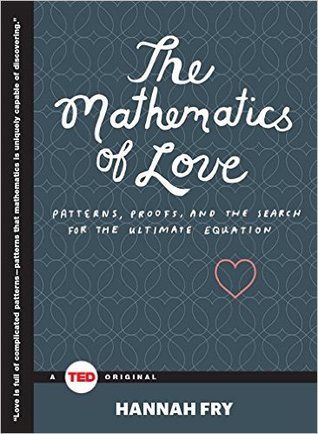More on this book
Kindle Notes & Highlights
by
Hannah Fry
Read between
March 5 - March 20, 2020
Mathematics is the language of nature. It is the foundation stone upon which every major scientific and technological achievement of the modern era has been built. It is alive, and it is thriving.
Paul Davies puts it: No one who is closed off from mathematics can ever grasp the full significance of the natural order that is woven so deeply into the fabric of physical reality.
This is known in economics as the “decoy effect.” What it demonstrates is that the presence of an irrelevant alternative can change how you view your choices.
Despite the name, game theory isn’t just about studying activities undertaken for amusement. It can apply in any situation where two or more adversaries compete against one another for some sort of payoff.
This setup is known as the “stable marriage problem,” and the process through which the friends picked their partners is called the Gale-Shapley algorithm.
In short, the group who do the asking and risk continual rejection actually end up far better off than the group who sit back and accept a suitor’s advances.
If you put yourself out there, start at the top of the list, and work your way down, you’ll always end up with the best possible person who’ll have you. If you sit around and wait for people to talk to you, you’ll end up with the least bad person who approaches you. Regardless of the type of relationship you’re after, it pays to take the initiative.
If you can handle the occasional cringe-inducing rejection, ultimately, taking the initiative will see you rewarded. It is always better to do the approaching than to sit back and wait for people to come to you. So aim high, and aim frequently: The math says so.
(Hermione’s match percentage × Harry’s match percentage)^(1/2) Or (99.6 × 9.1)^1/2 = 30.1% match.
Messages = 0.4 a1 - 0.5 a2 - 0.1 a4 + 0.9 a5 +k
Put this list in a spreadsheet, with the name of the group in the first column, and the number of people the group represents in the next. The next step is to decide how likely each group of people is to actually show up if you invite them. Think about how far away people live. What else is going on in their lives? Do they secretly hate you? You get the idea. Think in terms of a percentage but write it down as a decimal. For example, your close friend from home and her boyfriend might be 95 percent likely to attend, so they would collectively get a score of 0.95. This makes up the third column
...more
This highlight has been truncated due to consecutive passage length restrictions.
Wt+1 = w + rwWt + IHM (Ht) Ht+1 = h + rHHt + IHM (Wt)
The most successful relationships are the ones with a really low negativity threshold.4 In those relationships, couples allow each other to complain, and work together to constantly repair the tiny issues between them. In such a case, couples don’t bottle up their feelings, and little things don’t end up being blown completely out of proportion.


